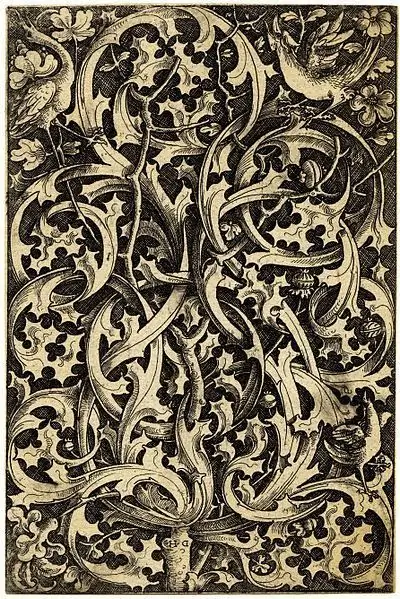2025 Author: Leah Sherlock | [email protected]. Last modified: 2025-01-24 17:46:30
The national Uzbek ornament is an amazing phenomenon in terms of beauty and grace. In addition to visual appeal, these patterns have a deep semantic content, which we will consider in this article.

Where is the Uzbek ornament used?
Practically every applied art in Uzbekistan uses a variety of patterns and drawings, many of which have ancient names that reflect their meaning. The ornament is decorated with fabrics made using the “abrband” technique (in translation, it means “tied cloud”) - this is a traditional weaving technique, when the threads of the future fabric are manually tied into bundles that form a unique pattern. Also often clothes and household items were decorated with skillful embroidery.
Mainly, festive men's clothing, bride's wedding attire, wedding veil, sashes, cases for knives, mirrors, etc. were covered with patterns. In addition, many household items were decorated: bedspreads, tablecloths, prayer rugs.
In the 19th century, several main centers were formed - cities where artistic embroidery was professionally practiced - Bukhara, Fergana, Nurata and others, in each of whichused the features of the ornament of their native land. And at the end of the 19th century, embroidery machines appeared, which are still used today.

Uzbek dishes
Besides this type of art, the ornament is used in the decoration of dishes, which is done mainly in blue, white, blue tones with yellow, red and brown. It often uses a stylized image of cotton, the cultivation of which Uzbekistan became famous during the Soviet period - it is known as "buttermilk" (translated from Uzbek this word means "cotton"). Tableware with Uzbek ornaments is popular all over the world.
Common motifs
The most common theme of Uzbek ornaments and patterns is the motif of a blooming garden - this symbol concentrates the wishes of happiness, prosperity and well-being. Images of flowers had their own symbolism, for example, a blue cornflower meant a young man, a red poppy meant a beautiful girl, a tulip meant chastity and innocence, and a rose meant harmony and beauty of the world around.
Often ornaments used images of plants and flowers, for one reason or another considered by Uzbeks to be healing or protective (in principle, this is characteristic of national patterns). For example, almond was a symbol of longevity and he alth, pepper - protection from all evil and purification, and the image of a pomegranate meant we alth and abundance.

In lush thickets of plantsbeautiful birds are hiding on Uzbek ornaments, whose images call for happiness in the family. The nightingale meant wisdom, the multi-colored feathers of pheasants, peacocks and roosters with their bright colors protect from the evil eye. For the same purpose, an ornament called "snake's footprint" was used. The Uzbeks also widely used images of other animals in their applied art: strong-horned rams personified courage and bravery.
The symbols of the Sun, Moon, stars were often used, the Universe was conventionally depicted as a bouquet in exquisite vases. Household items were also present in the ornaments, but they also had a certain semantic implication: for example, knives were designed to protect against attacks and evil, lamps - to protect space from evil spirits. Sometimes texts and architectural images were used in the patterns.
Present
Now many women and girls of Uzbekistan continue to engage in ornamental embroidery. But, in addition, traditional Uzbek motifs are popular all over the world - famous designers turn to them in their fashion collections.
Recommended:
The hidden meaning of The Master and Margarita

The Master and Margarita is a novel by Mikhail Afanasyevich Bulgakov. The type of the novel is difficult to unambiguously determine, since the work is multi-layered and contains many elements of such genres as satire, farce, fantasy, mysticism, melodrama, parable, novel-myth. Many theatrical productions and several films have been made on its plot
Ornament of geometric shapes. Ornament styles. Ornament elements

The text tells about the origin and development of the oldest types of ornament, and also describes their properties and gives a brief classification
"A curious Barbara's nose was torn off at the market": the meaning and meaning of the saying

When we were children peeping at various interesting things, but not intended for the eyes of a child, our parents would catch us with the words: “The nose of the curious Varvara was torn off at the market”. And we understood what that meant, intuitively or consciously. In our article, we will deal with the meaning of this saying, and with whether it is good or bad to be curious
The legendary "Tales of Belkin": a summary and hidden meaning

The famous "Tales of Belkin", the summary of which is known almost by heart by every schoolchild, was liked by Pushkin's contemporaries. They take over us, the inhabitants of the twenty-first century
Fable "Quartet". Hidden meaning and morality

Krylov more than once in his fables criticized not only the government and greedy officials, but also the royal power. Masterfully wielding Aesopian language, he hid obvious truths that were easily read between the lines

